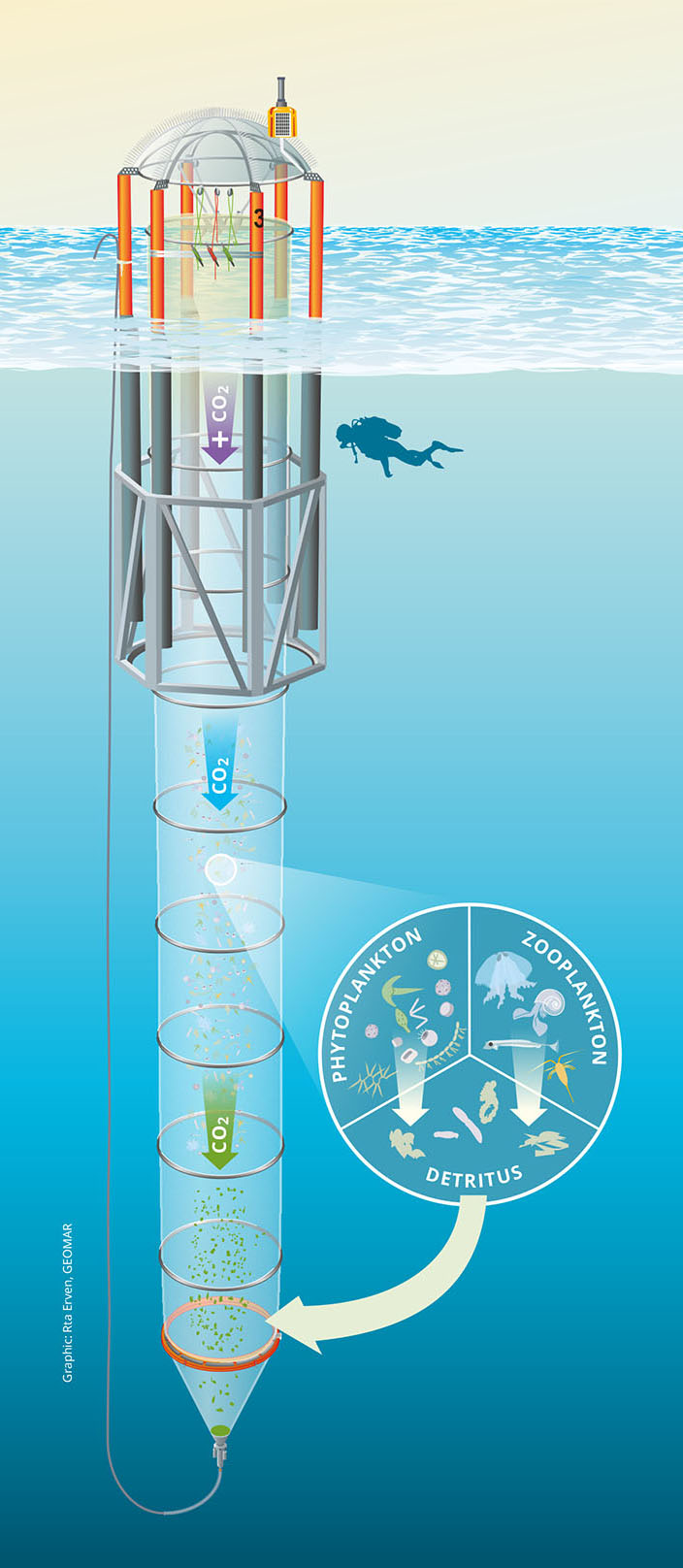
The KOSMOS mesocosms
In the field, the KOSMOS mesocosms look like tiny floating pavilions. Just the upper one and a half metres of the floatation frames stick out of the water, shining in bright orange between the waves, and their transparent umbrella hood sparkles in the sun.
When the photographer Nick Cobbing visited the mesocosm experiment in Spitsbergen in 2010, he said: If you would develop research equipment that looks good and helps to convey the subject of ocean acidification – they looked pretty much the same as the KOSMOS mesocosms.
But of course, a research question prompted the development of the mesocosms: After laboratory studies had revealed first findings on the effects of ocean acidification on individual species, researchers wanted to assess to what extent they could be translated to communities in their natural environment. It became necessary to isolate part of the marine ecosystem, keep as many conditions in today’s state, but elevate the acidification to values predicted for the future. A giant test tube was needed!
In the early 2000s the KOSMOS system was developed in Kiel. The abbreviation stands for Kiel off-shore Mesocosms for Future Ocean Simulations.
The nine experimental units consist of six seven and a half metres high floatation tubes, between which a cylindrical bag with a diameter of two and a length of up to 25 meters hangs. A research vessel takes the KOSMOS system to its respective operation site. When the equipment is deployed, the bags are still folded like an accordion. As soon as they are lowered, each bag encloses a water column and all planktonic organisms living in it. At the bottom, a kind of large funnel is attached: the sediment trap, which collects all material that sinks down inside the mesocosm.
The “spider” makes the future happen inside the mesocosms: Seawater saturated with carbon dioxide is pumped through the spiny, one and a half metres wide instrument’s 80 thin plastic tubes into the mesocosms until they reach the desired concentration. And then, the sample routine can begin…
In this video portrait, Prof. Ulf Riebesell, marine biologist at GEOMAR and BIOACID coordinator, tells how the KOSMOS mesocosms were developed and why he enjoys the mesocosm experiments.